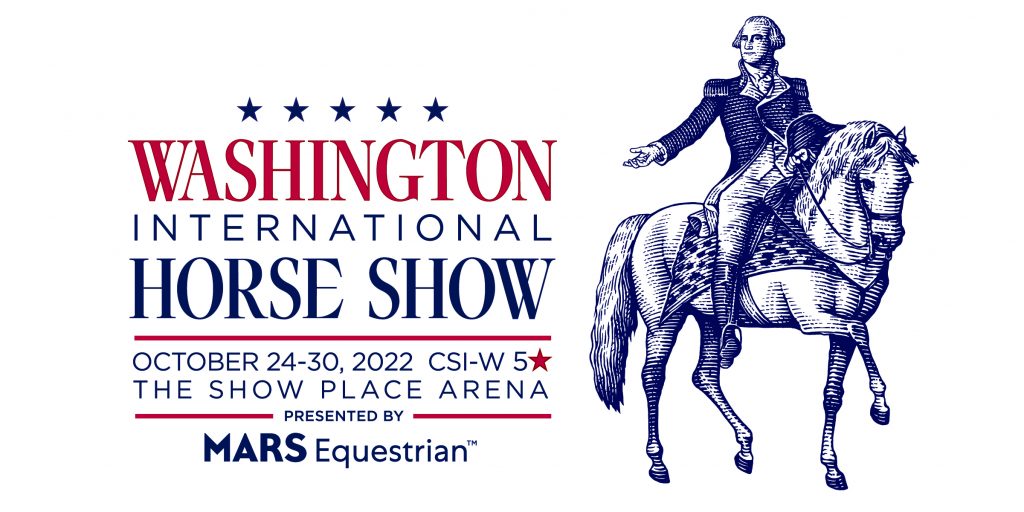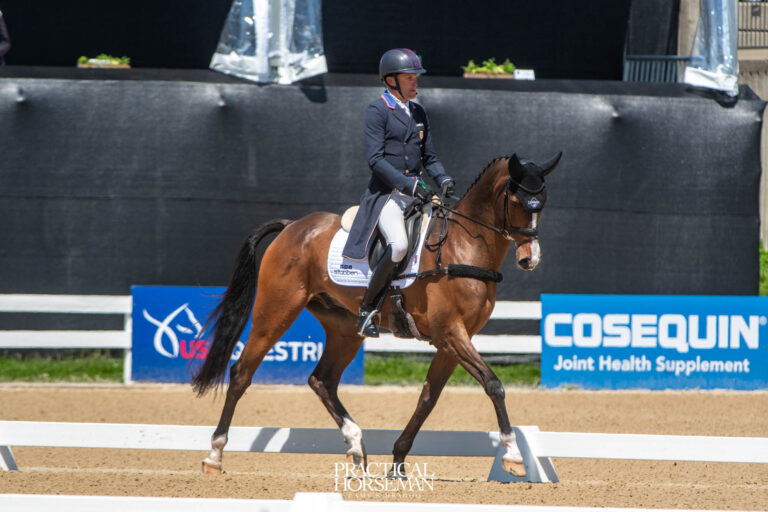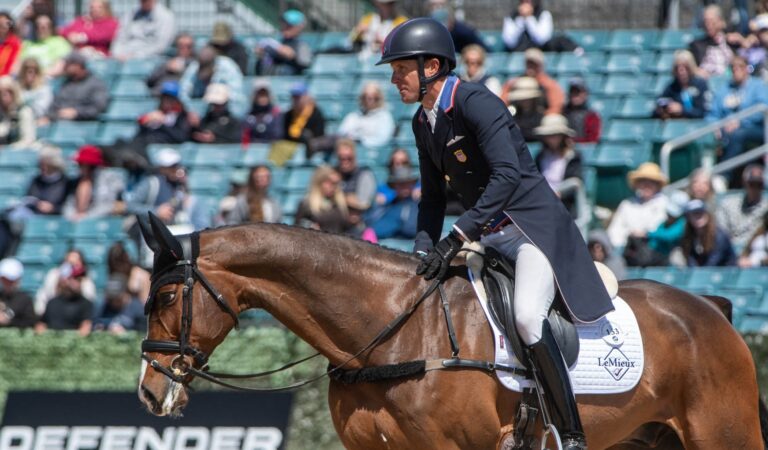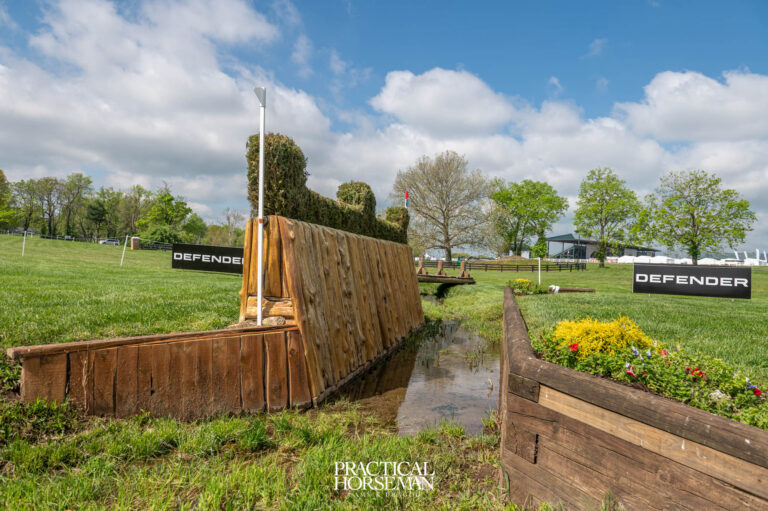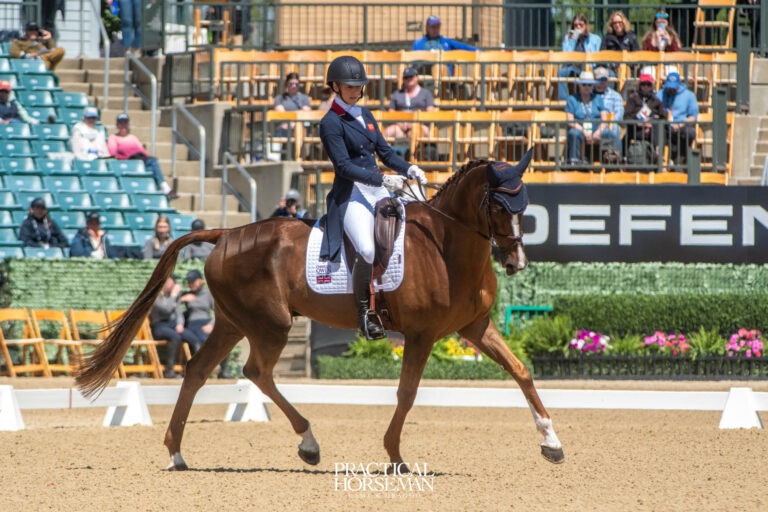The fall season on the hunter/jumper circuit is synonymous with end-of-year championships, finals, and the “indoors” season. The nation’s top athletes across hunters, jumpers, and equitation go head to head for some of the sport’s most coveted awards.
While these athletes are undoubtedly experienced, competing in an indoor arena often poses unique challenges for horse-and-rider combinations. The arena lighting and resulting shadows, coupled with unique sights and sounds from stadium seating areas and jumbotrons, make for a spookier environment.
In addition, the competition rings are often smaller causing the jumps to come up quicker. Even the most experienced horses and riders can run into trouble on course if they’re not prepared.
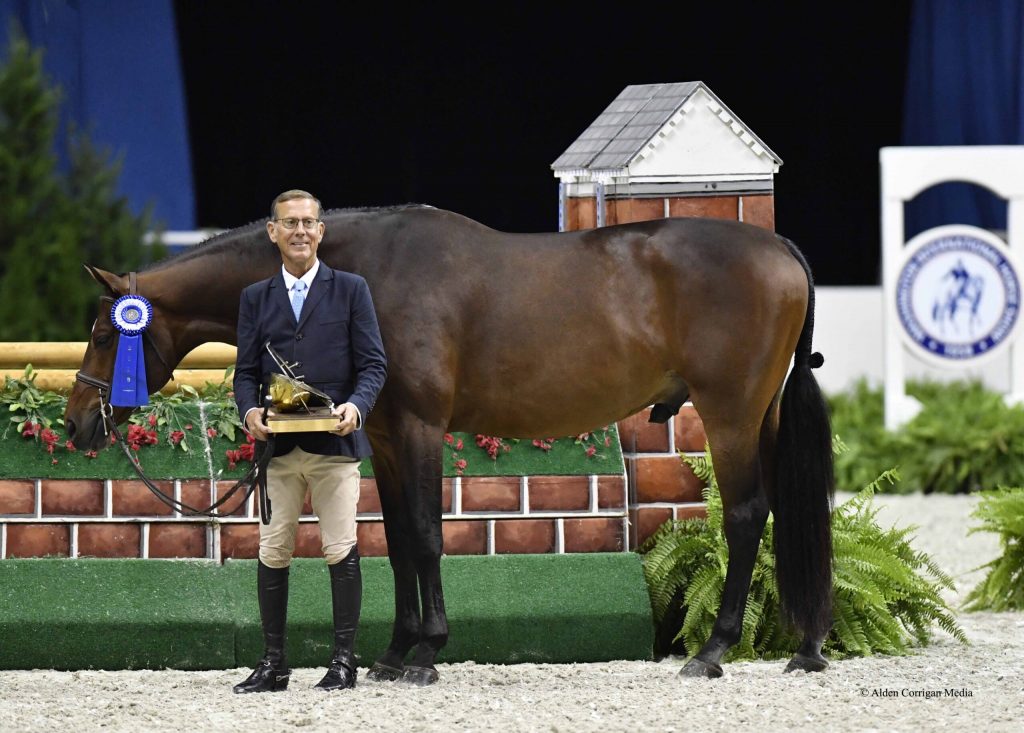
© Alden Corrigan
We thought we’d take a page out of the experts’ manual by speaking with professional and amateur hunter and jumper riders, as well as a top equitation rider, who have had successful “indoors” seasons and who have all qualified and plan to complete at the 2022 Washington International Horse Show (WIHS) being held at The Show Place Arena, Prince George’s Equestrian Center (PGEC) in Upper Marlboro, Maryland, running October 24-30.
Read on to learn how these athletes are preparing for indoors and set themselves, and their horses, up for success.
School in an Indoor Arena
While it may sound obvious, spending time in any indoor arena in the days and weeks leading up to a competition held inside is something that the experts don’t take for granted.
Decorated high performance hunter professional John French of Wellington, Florida, finds this helpful, especially for his greener mounts who are not accustomed to a potentially spookier setting.
“I am normally in Florida for most of the year, so we don’t get too much of an opportunity to ride in an indoor ring. I like to practice in an indoor ring before arriving at the show,” he explained.
Top junior equitation rider Skylar Wireman of Bonsall, California, said she will dress up her ring at home with unique décor that might be new to the horses to let them have a change in scenery.
“We also have lights on our ring at home so I usually jump a couple times at night under the lights so they aren’t surprised by the shiny rails,” she added.
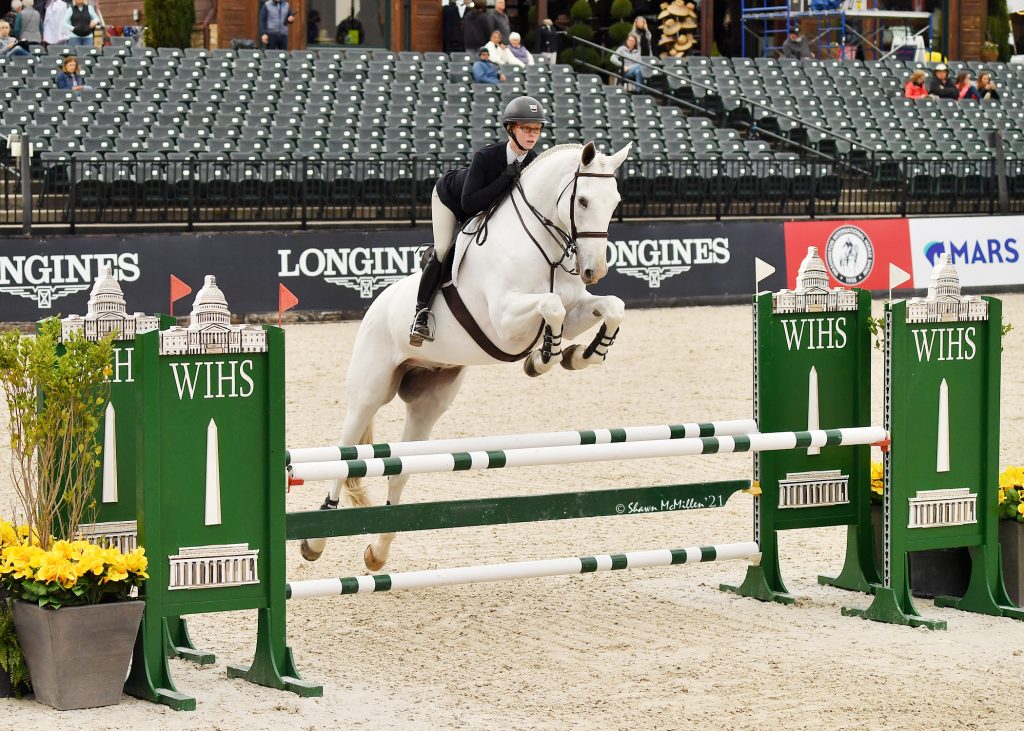
© Shawn McMillan
Stephanie Danhakl, a multiple-time champion at WIHS in the amateur owner hunters, and a member of the WIHS Board of Directors, has a similar approach. She prepares her horses by schooling indoors over hunter courses that mimic what they’d see at the competition.
“Heading into indoors, I want to feel as confident and prepared as possible,” said the Dover, Massachusetts resident. “That means extra practice in the weeks leading up to a big show to work out any kinks. At home, we jump [fences with] boxes, flowers, and brush. That way, the horses are used to those types of jumps and less likely to spook.”
To acclimate greener horses to the changes in lighting, sights, and sounds, exposure to an indoor arena is a given. In addition, to help ensure successful jumping trips, the management of space, which tends to be more limited in these situations, is critical.
Prepare for a Tighter Track
In the jumper ring, reaction times need to be swift. “I think it’s good for the horse and the rider to have the jumps come at you a little quicker and make sure both of us have our reactions sharp,” stated Canadian Olympian and 2021 WIHS President’s Cup winner Tiffany Foster, who often practices in a smaller arena before competing indoors.
“Sometimes before a jump-off indoors, I’ll go a hole shorter with my stirrups,” she continued. “I find this helps to regain my balance sooner to be ready for what’s coming next.”
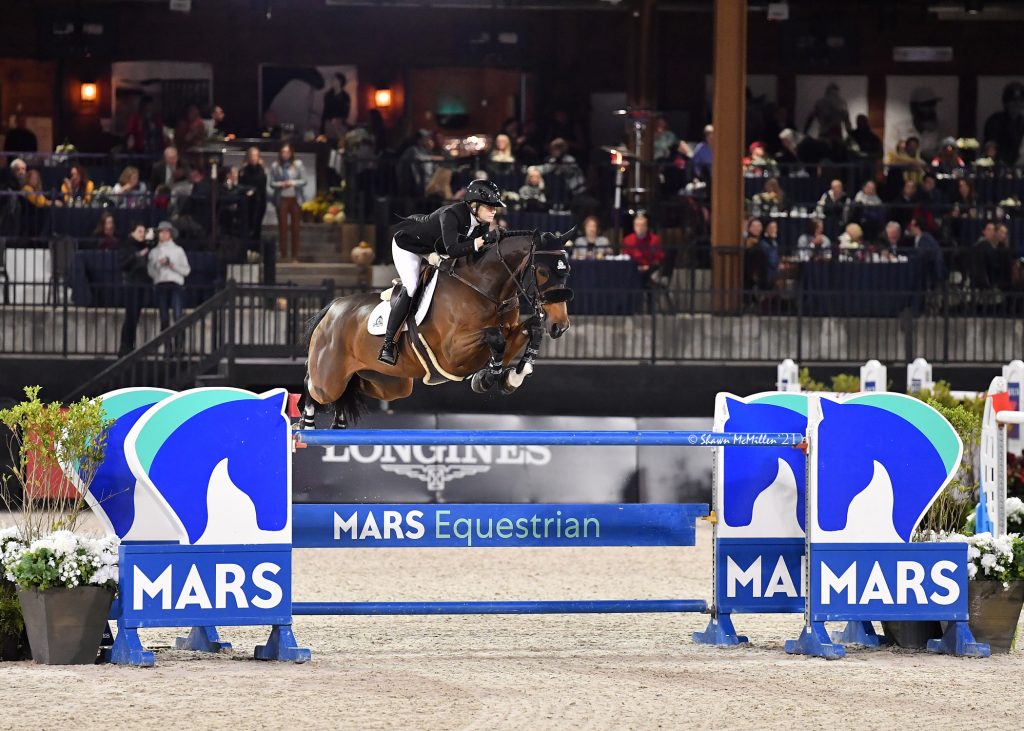
© Shawn McMillan
Adult jumper rider Charlotte Powers Wesley of Leesburg, Virginia, who won the $10,000 WIHS Adult Jumper Championship in 2019, echoes Foster’s plan for preparing for a tighter arena. “Something that is always important, but especially important showing indoors, is accuracy in following your planned track,” she explained.
“In large outdoor rings, riders can sometimes ‘get away’ with not being very attentive to their exact track, lines, and corners. In a small indoor, every footfall counts. For example, sticking to your track around a corner versus falling inside [your planned track] can make or break your next distance — there is much less room for correction.”
In the weeks leading up to indoors, Wesley works closely with her trainer, Justine Powers Jarvis of Highgarden Farm in Frederick, Maryland, to develop exercises related to accuracy and track both over fences and on the flat.
“We’ll do detailed patterns where we’re focused on exact footfall through corners and bending lines,” shared Wesley. “This is something that I find really helpful to replicate on my own on the flat and over ground rails.”
Wireman agrees, adding that she does practice exercises that involve a lot of lengthening and collecting to help her horses become more adjustable since there is less time to make changes mid-course.
As a hunter rider, Danhakl stressed the importance of time and space. “Indoor rings tend to be smaller, so it’s important to use as much of the available space as possible by not cutting turns both on the approach and on the landing after the jump,” she shared.
“Time and space are valuable when you’re on course in a small indoor, so don’t cheat yourself and your horse out of precious feet and seconds by cutting corners!”
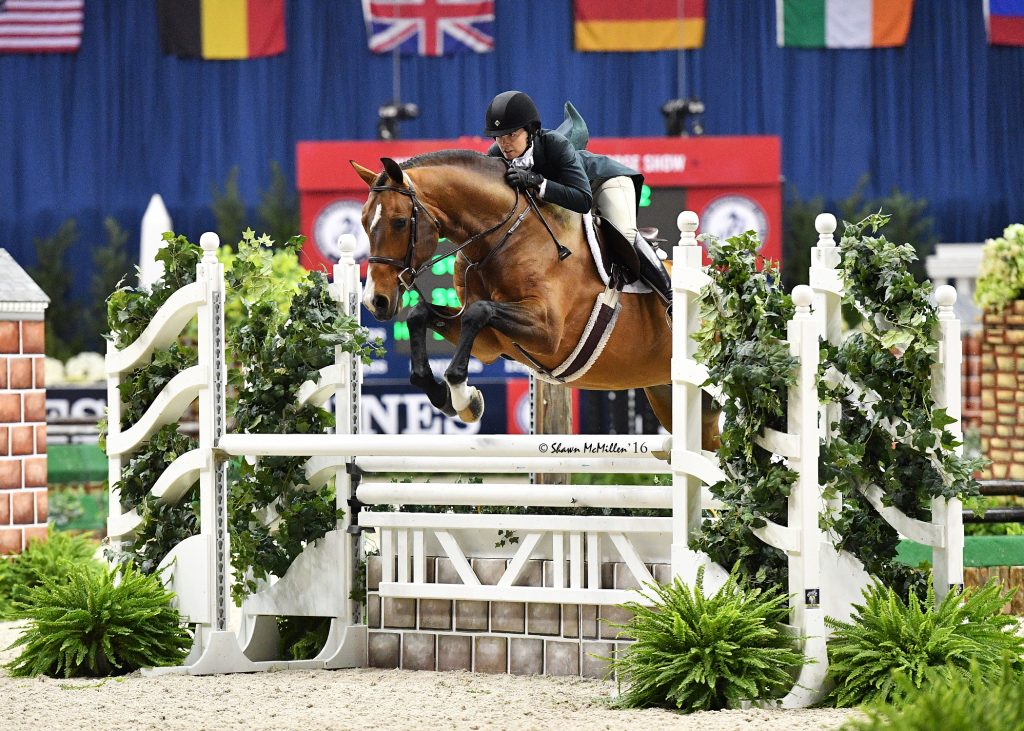
© Shawn McMillan
French also taps a few specific exercises that help him and his horses utilize the time and space available to the best of their ability. “Things come up quick in an indoor ring, so you have to recover quickly on the backside of a jump,” he stated.
“It’s important to get the balance you want sooner than later so that you have that coming out of the turn to the next jump. If you recover too late, it’s likely you will be slowing down on the next turn and then probably pulling back to the next jump.
“[To prepare for this at home,] I set a pole four strides after a jump and aim to get the horse to recover and get the balance they want before reaching the pole,” he continued. “Some indoor ring corners are square, and some are round, so I’ll also ride over poles set in a circle to practice for a ring where you can’t make the turns as square.”
Enjoy the Experience
While these top athletes have a laser focus on preparation, they are all looking forward to taking the time to enjoy their rides at indoors, and in particular, at WIHS in its new home at The Show Place Arena.
“Something I love about WIHS is the atmosphere,” said Wesley. “It feels special and exciting, and the features for exhibitors like the hospitality room make you feel truly welcome and celebrated. Riders, trainers, grooms, barn managers, family, and so many more work hard to enable horses and riders to qualify, so the festive feeling is extremely appreciated. I’m excited to see how this tone and culture translates to The Show Place Arena at Prince George’s Equestrian Center, which is also a beautiful venue.”
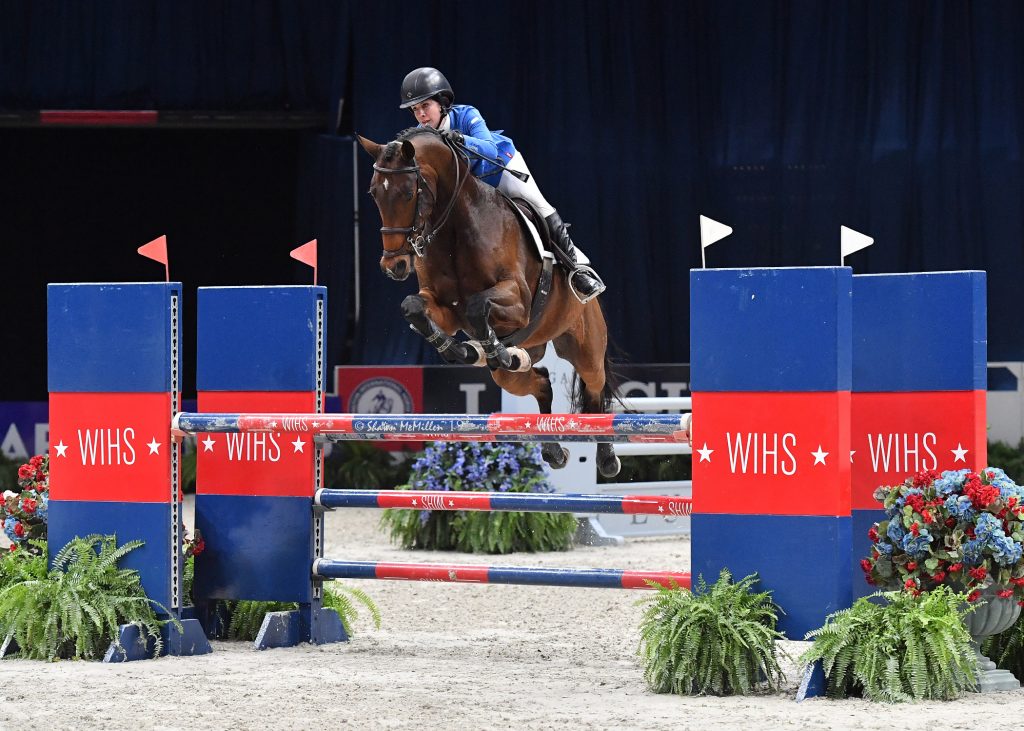
© Shawn McMillan
“WIHS is one of the first indoors I showed at when I was a kid. I grew up in Maryland so I would come and watch the big classes and open jumpers,” French reminisced. “I’m excited to see the changes WIHS will make [in its new venue]. It’s a special event, people get a little more dressed up, and there are fun classes at night. I work with [U.S. show jumping Olympian] Kent Farrington, and it’s not often we come to the same show, so hopefully we’ll be there together.”
“What I like best about WIHS is the opportunity to compete against the best competitors in the country,” concluded Danhakl. “I love the fanfare and the prizes earned for a job well done. It feels special. I also love the proximity to the sights and museums of D.C. I I’m excited for the show to be at Prince George’s Equestrian Center because it’s a ring I know well and still close to D.C.”
To learn more about the Washington International Horse Show and buy your tickets to attend, visit www.WIHS.org. Follow WIHS on Facebook, Instagram, Tiktok, Twitter, and YouTube to see more highlights for this year’s show.
